Top 10 Largest Canyons in the US You Can't Miss
| Summary |
A canyon is a deep, narrow valley with steep sides, typically carved by a river over long periods of geological time. Canyons are significant geological features that reveal the processes of erosion and weathering, as well as the layers of rock and sediment that make up the Earth's crust.
The United States is home to hundreds of canyons, each with its own unique geological features, ecological systems, and historical significance. These geological marvels offer breathtaking views, rich histories, and unique ecosystems.
The United States canyons range from well-known tourist destinations to hidden gems, each offering unique natural beauty and opportunities for outdoor recreation. Whether it's the iconic vistas of the Grand Canyon or the cultural significance of Canyon de Chelly, these canyons provide a deep appreciation for the country's geological and cultural richness.
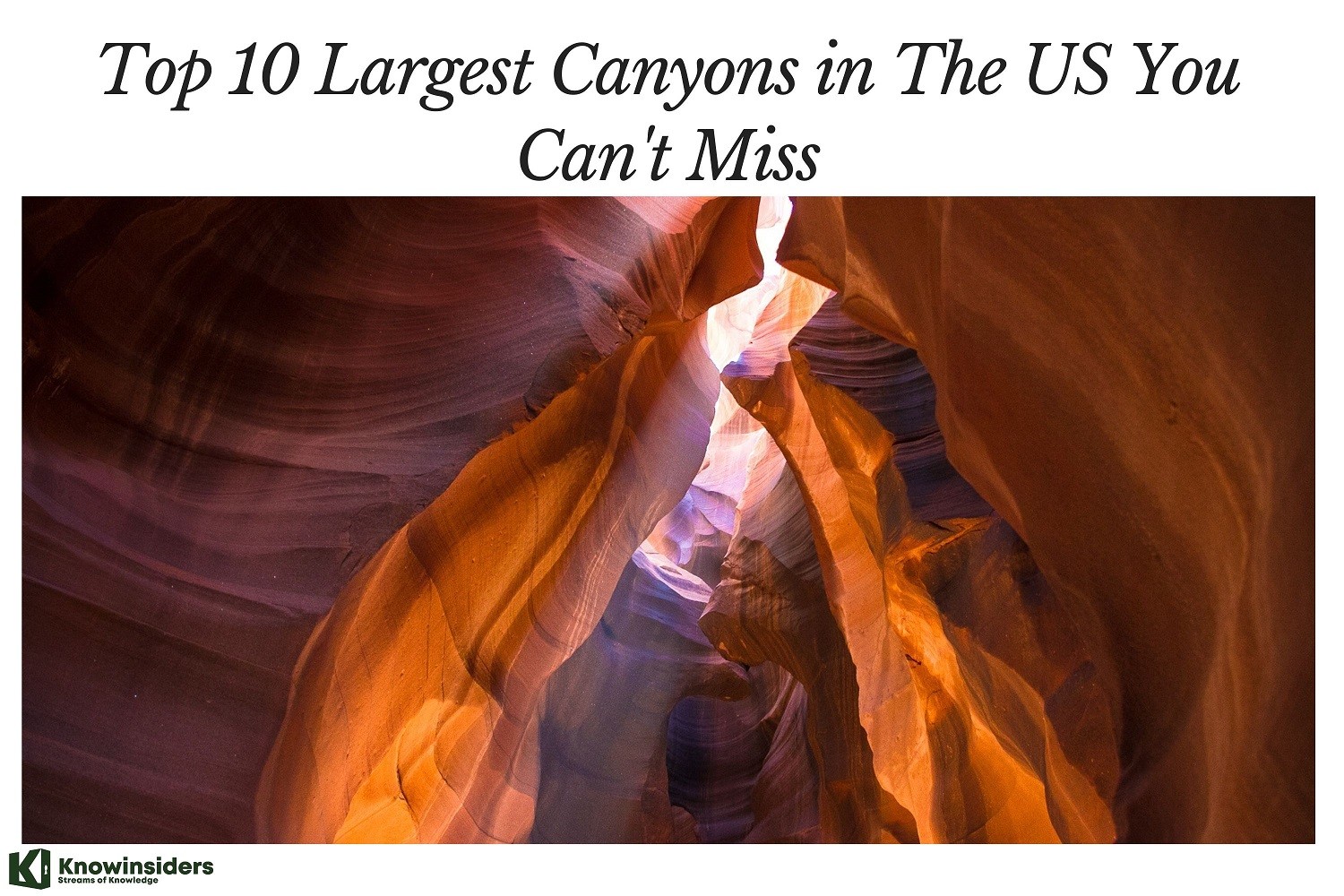 |
| Top 10 Largest Canyons in The US You Can't Miss |
How are Canyons Formed?
Canyons are formed primarily through the processes of erosion and weathering, which shape the landscape over millions of years. Here's a detailed look at how canyons are formed:
Water Flow: Canyons are typically created by the erosive power of rivers. Just like a traveler, a river carries sediment and rock particles, gradually eroding the riverbed and banks.
Over time, the river gradually carves its way into the bedrock, forming a deep and narrow valley. This process is referred to as downcutting. The power of the flowing water concentrates on erosion at the base of the river channel, slowly deepening the canyon.
Expanding the Canyon: As the canyon deepens through downcutting, it also undergoes widening through lateral erosion. The river can wind its way and gradually wear away the edges of the canyon, particularly when there are heavy floods and the water current becomes stronger.
Mechanical Weathering: Physical forces such as temperature fluctuations, cycles of freezing and thawing, and the force of flowing water gradually break down rocks into smaller fragments. As an illustration, water has the ability to infiltrate cracks in the rock, freeze, and then expand, resulting in the fracture and fragmentation of the rock.
Chemical Weathering: Through chemical reactions, minerals can be dissolved by acidic water, leading to the weakening and breakdown of rocks. This process aids in the removal of material from the canyon walls, ultimately contributing to their erosion.
Canyons are known for their unstable steep walls, prone to landslides and rockfalls. Sections of the canyon walls can break off and fall into the canyon due to weathering and erosion, which is referred to as mass wasting. This helps to expand the canyon as time goes on.
Uplift: Tectonic forces have the ability to raise significant portions of the Earth's crust. When an area experiences uplift, rivers are endowed with greater potential energy, thereby enhancing their erosive capabilities. The elevated terrain results in rivers having a more pronounced slope, leading them to erode the bedrock more vigorously.
Geological Activity: Geological activity, such as faulting and other tectonic movements, can result in the development of weaknesses in the rock. These weaknesses can then be utilized by rivers, contributing to the formation of canyons.
Top 10 Largest Canyons in The US You Can't Miss
1. Grand Canyon, Arizona
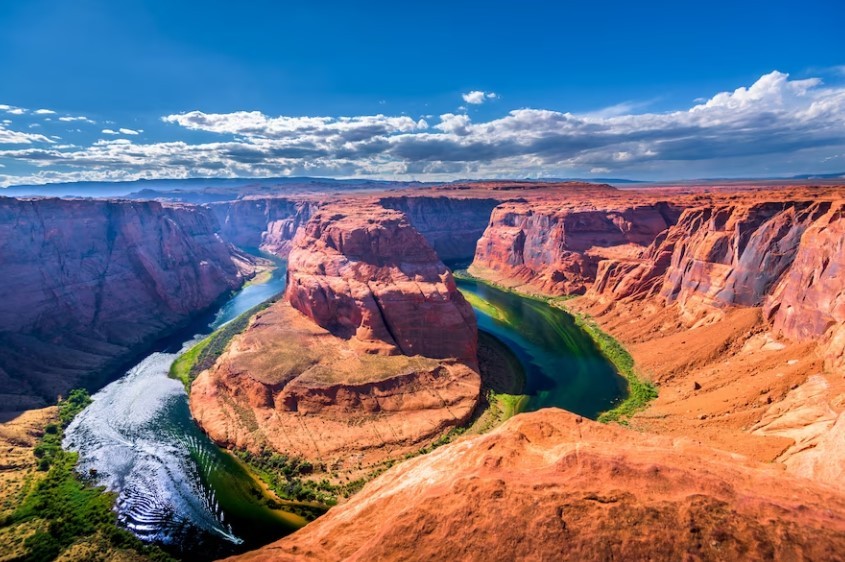 |
| Grand Canyon |
Depth: The Grand Canyon reaches depths of over a mile (around 6,000 feet) at its deepest point.
The Grand Canyon is one of the most iconic natural landmarks in the world, known for its immense size and breathtaking vistas. Carved by the Colorado River over millions of years, it exposes nearly two billion years of geological history through its colorful rock layers.
Visitors can enjoy panoramic views from numerous viewpoints along the rim, take ranger-led walks to learn about the canyon's geology and ecology or embark on river rafting trips for a unique perspective from the bottom of the canyon.
The South Rim is open year-round and offers a range of visitor services, including hotels, restaurants, and shuttle buses. The North Rim is less visited and is only open from mid-May to mid-October due to winter snowfall.
The Grand Canyon offers numerous hiking trails of varying lengths and difficulty levels. Trails range from short walks along the rim, such as the Rim Trail, to multi-day backpacking adventures like the Rim-to-Rim hike, which can cover over 20 miles one way.
2. Hells Canyon, Idaho and Oregon
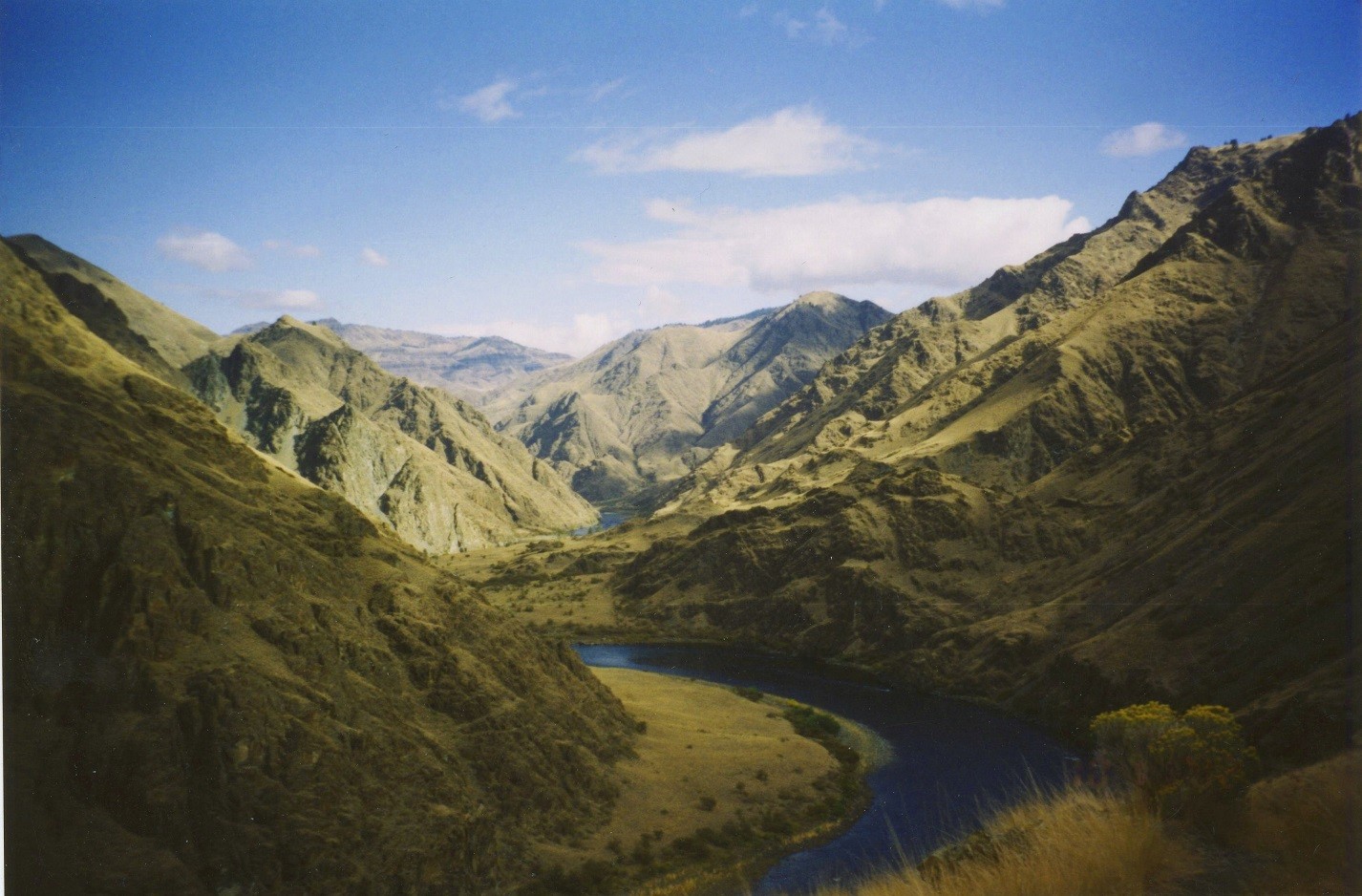 |
| Hells Canyon |
Depth: Hells Canyon is the deepest river gorge in North America, with depths of nearly 8,000 feet.
Hells Canyon, carved by the Snake River, offers rugged wilderness experiences and stunning scenery. Its towering cliffs, rugged terrain, and diverse wildlife make it a paradise for outdoor enthusiasts.
Visitors can explore the canyon by hiking, rafting, fishing, or taking scenic boat tours. The area is also rich in history, with evidence of ancient Native American cultures and remnants of early settlers.
Access to Hells Canyon can be challenging due to its remote location and rugged terrain. The area is managed by the U.S. Forest Service and offers limited visitor facilities, primarily in the form of campgrounds and primitive boat launch sites.
Hiking opportunities in Hells Canyon vary depending on access points and difficulty levels. Popular trails include the Hells Canyon National Recreation Trail, which covers over 30 miles along the Snake River, and shorter day hikes like the Wild Sheep Creek Trail.
3. Bryce Canyon, Utah
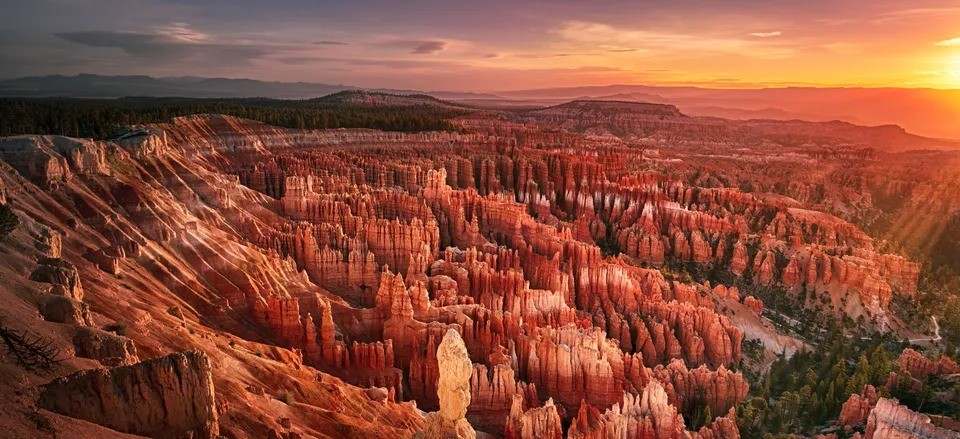 |
| Bryce Canyon |
Depth: Bryce Canyon is not as deep as some other canyons, with depths ranging from 800 to 2,000 feet.
Bryce Canyon is famous for its unique geological formations called hoodoos, which are spire-shaped rock pillars formed by frost weathering and stream erosion. The canyon is part of the larger Colorado Plateau.
Visitors to Bryce Canyon can marvel at the hoodoos from numerous viewpoints along the rim or venture down into the amphitheaters on hiking trails. The park also offers stargazing opportunities due to its designation as an International Dark Sky Park.
Bryce Canyon National Park is open year-round and offers visitor services such as campgrounds, lodges, and ranger-led programs. The park's main road is plowed in winter, allowing access to some viewpoints and trails, although services are limited during this time.
Bryce Canyon National Park offers a variety of hiking trails that range from easy walks along the rim, such as the Rim Trail and Bristlecone Loop, to more strenuous hikes into the canyon, including the popular Navajo Loop and Queen's Garden Trail.
4. Palo Duro Canyon, Texas
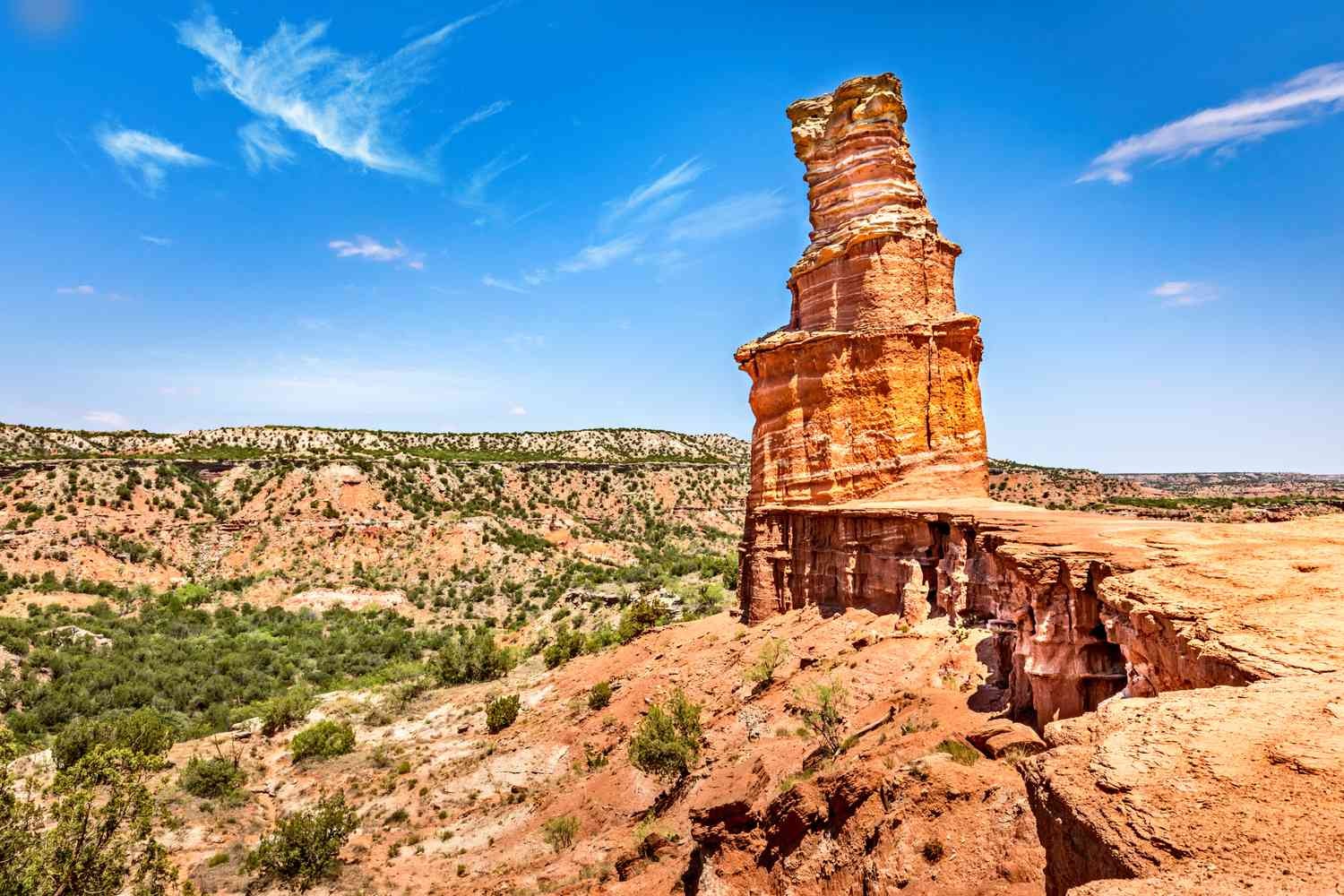 |
| Palo Duro Canyon |
Depth: Palo Duro Canyon is the second-largest canyon in the United States, with depths reaching up to 800 feet.
Often referred to as the "Grand Canyon of Texas," Palo Duro Canyon is a geological wonder characterized by its vibrant colors, towering cliffs, and rugged terrain. It was carved by the Prairie Dog Town Fork of the Red River over millions of years.
Visitors can explore the canyon's scenic beauty by hiking, biking, or driving along the 16-mile Park Road. The park also offers camping, picnicking, horseback riding, and opportunities for wildlife viewing.
Palo Duro Canyon State Park is located near Amarillo in the Texas Panhandle and is open year-round. Visitor amenities include campgrounds, cabins, interpretive exhibits, and a visitor center.
Palo Duro Canyon State Park offers over 30 miles of hiking, mountain biking, and equestrian trails, ranging from easy strolls to challenging treks into the canyon depths. Popular trails include the Lighthouse Trail and the Capitol Peak Trail.
Read More: 10 Longest and Most Beautiful Rivers in Texas
5. Zion Canyon, Utah
 |
| Zion Canyon |
Depth: Zion Canyon reaches depths of up to 2,640 feet and is characterized by its towering sandstone cliffs.
Zion Canyon is a breathtaking oasis of red rock formations, lush vegetation, and meandering rivers, nestled within Zion National Park. Carved by the Virgin River, the canyon offers stunning vistas and diverse ecosystems.
Visitors can experience the canyon's majesty by hiking its trails, taking scenic drives along Zion Canyon Scenic Drive, or embarking on interpretive ranger programs. Popular attractions include Weeping Rock, Emerald Pools, and Zion Canyon Overlook.
Zion National Park is located in southwestern Utah and is accessible year-round. The park provides visitor services such as campgrounds, shuttle transportation, ranger-led programs, and a visitor center.
Zion National Park offers a wide range of hiking trails that cater to all skill levels. From leisurely walks along the Riverside Walk to challenging ascents like Angels Landing and The Narrows, visitors have plenty of options to explore the canyon's beauty.
6. Kings Canyon, California
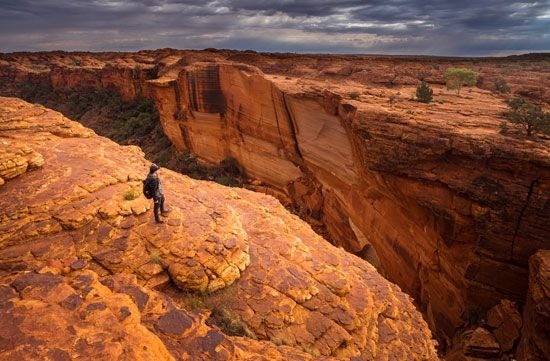 |
| Kings Canyon |
Depth: Kings Canyon is one of the deepest canyons in the United States, reaching depths of over 8,200 feet.
Nestled within the Sierra Nevada Mountains, Kings Canyon is a pristine wilderness of granite cliffs, lush forests, and cascading waterfalls. Carved by the South Fork of the Kings River, the canyon is known for its dramatic landscapes and abundant biodiversity.
Visitors can explore the canyon's wonders by hiking its trails, camping in its backcountry, or driving along the scenic Kings Canyon Scenic Byway. Key attractions include the towering granite cliffs of Grand Sentinel and the thundering waters of Roaring River Falls.
Kings Canyon National Park is located in central California and is accessible via State Route 180. The park offers visitor services such as campgrounds, lodges, ranger-led programs, and a visitor center.
Kings Canyon National Park offers a variety of hiking trails that lead into the canyon's depths and along its rim. The Rae Lakes Loop, Mist Falls Trail, and Zumwalt Meadow Trail are among the park's popular hiking routes.
7. Antelope Canyon, Arizona
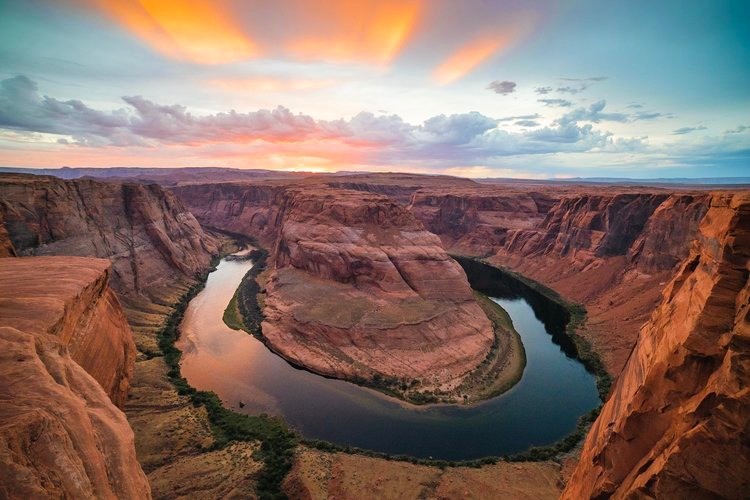 |
| Antelope Canyon |
Depth: Antelope Canyon is a slot canyon with depths ranging from 120 to 180 feet.
Located on Navajo land near Page, Arizona, Antelope Canyon is renowned for its mesmerizing sandstone formations, narrow passageways, and ethereal light beams. Carved by flash floods and wind erosion, the canyon's smooth, flowing shapes create a surreal atmosphere.
Visitors can explore the canyon's sculpted corridors and intricate patterns, capturing stunning photographs of light beams filtering through the narrow openings. Upper Antelope Canyon is particularly famous for its "beam of light" phenomenon, which occurs during certain times of the day.
Antelope Canyon is located approximately 5 miles east of Page, Arizona, and is accessible via guided tours. Visitors are required to book tours in advance, as access to the canyon is restricted to guided groups. Tours typically last between 1 to 1.5 hours and involve walking and climbing over uneven terrain.
Antelope Canyon is accessible only through guided tours offered by authorized tour operators. Visitors can choose between Upper Antelope Canyon and Lower Antelope Canyon tours, which provide access to different sections of the canyon and offer unique photography opportunities.
8. Black Canyon of the Gunnison, Colorado
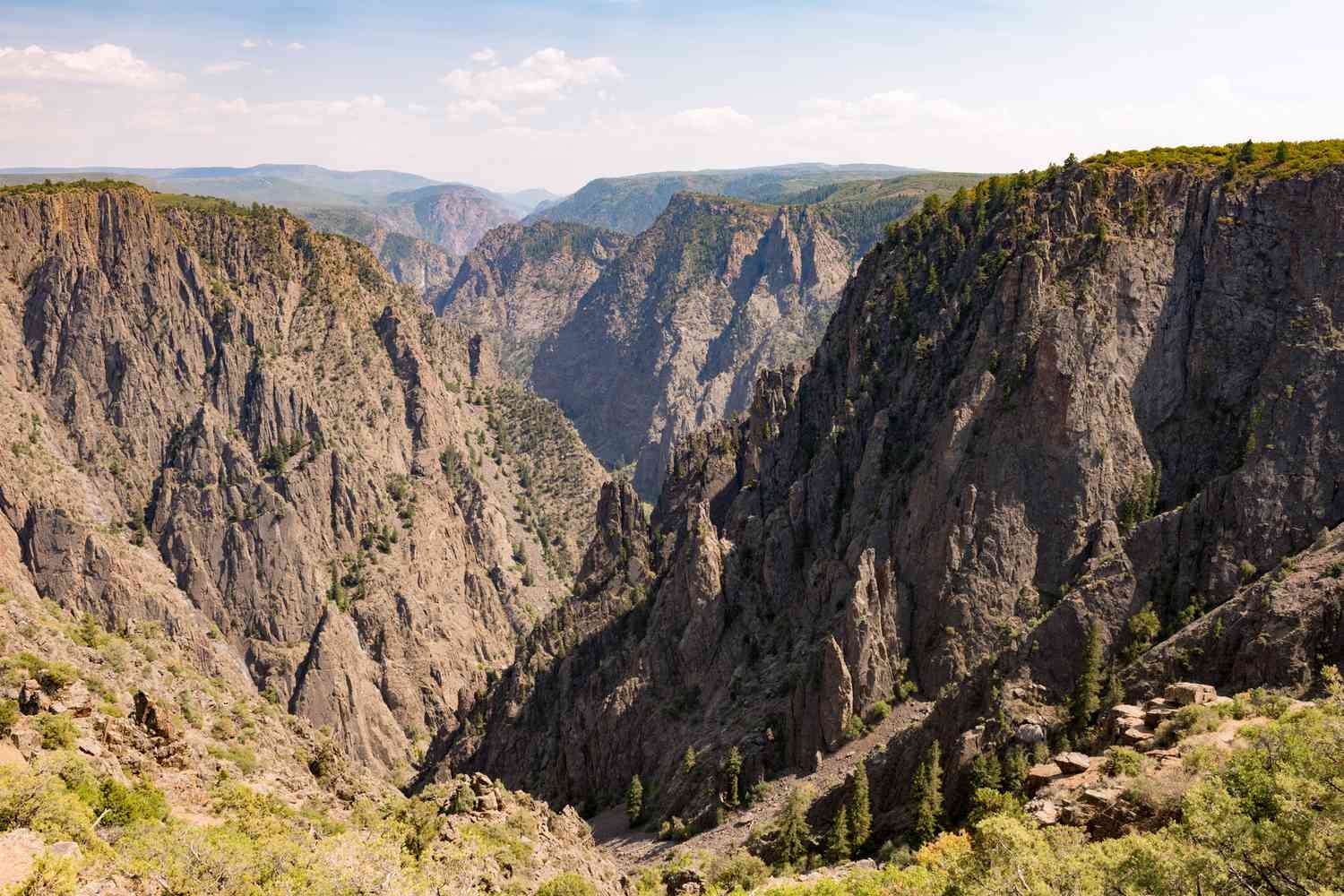 |
| Black Canyon of the Gunnison |
Depth: The Black Canyon of the Gunnison is known for its steep, dark cliffs, with depths reaching up to 2,700 feet.
Located in western Colorado, the Black Canyon of the Gunnison is a spectacular gorge carved by the Gunnison River over millions of years. Its sheer walls, narrow passages, and rugged terrain make it one of the most dramatic canyons in the United States.
Visitors can admire the canyon's breathtaking vistas from numerous overlooks along the South Rim and North Rim drives, or venture down into the canyon on challenging hikes. The park also offers ranger-led programs, scenic drives, and wildlife viewing opportunities.
Black Canyon of the Gunnison National Park is located near the town of Montrose, Colorado, and is accessible via State Highway 347. The park provides visitor services such as campgrounds, ranger stations, and interpretive exhibits.
Black Canyon of the Gunnison National Park offers several hiking trails, ranging from easy walks along the rim to strenuous descents into the canyon. Popular trails include the Rim Rock Trail, Warner Point Trail, and the challenging Gunnison Route.
9. Canyon de Chelly, Arizona
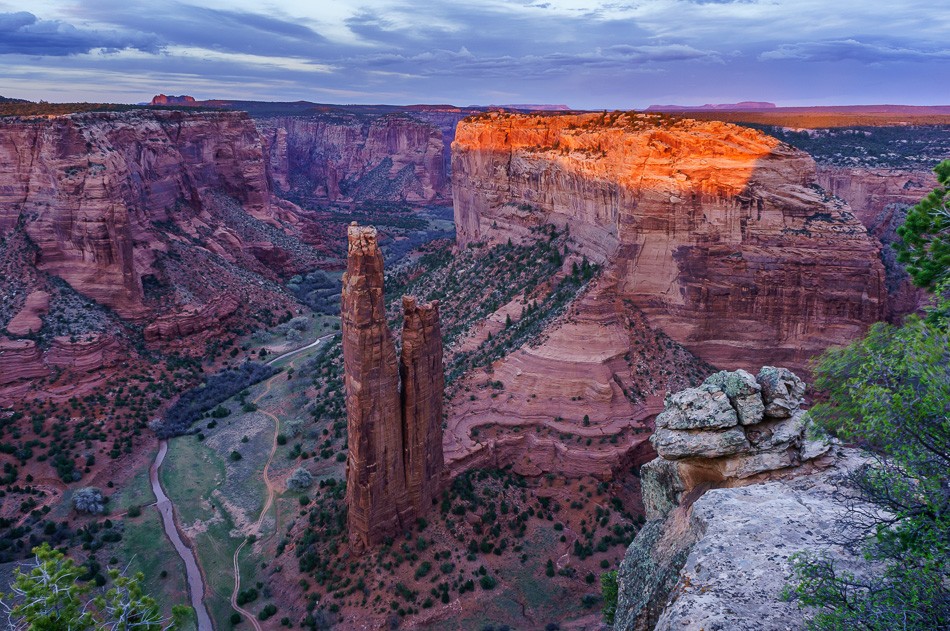 |
| Canyon de Chelly |
Depth: Canyon de Chelly features sandstone walls that rise up to 1,000 feet above the canyon floor.
Situated in northeastern Arizona, Canyon de Chelly is a place of profound cultural significance for the Navajo people, who have inhabited the area for thousands of years. The canyon is home to ancient cliff dwellings, petroglyphs, and archaeological sites.
Visitors can explore the canyon's rich history and natural beauty by hiking its trails, taking guided jeep tours with Navajo guides, or visiting cultural exhibits at the park's visitor center. Key attractions include Spider Rock, Mummy Cave, and Antelope House Ruin.
Canyon de Chelly National Monument is located near the town of Chinle, Arizona, and is accessible via Highway 191. The park offers limited visitor services, including campgrounds, picnic areas, and ranger-led programs.
Canyon de Chelly National Monument offers several hiking trails that provide access to the canyon floor and overlooks with panoramic views. Popular trails include the White House Ruins Trail, Spider Rock Overlook Trail, and the South Rim Drive.
10. Waimea Canyon, Hawaii
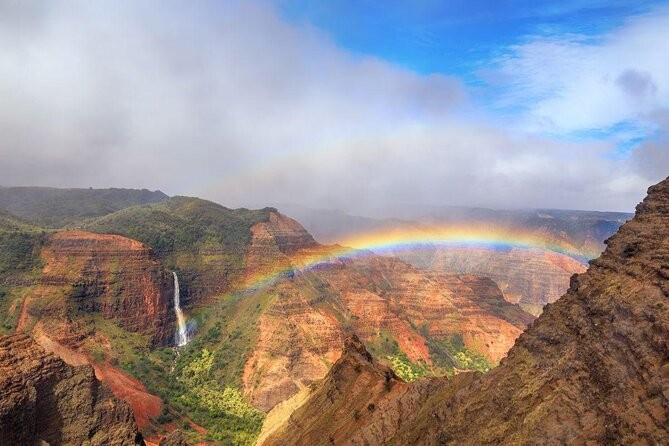 |
| Waimea Canyon |
Depth: Waimea Canyon is approximately 14 miles long, 1 mile wide, and over 3,600 feet deep.
Located on the island of Kauai in Hawaii, Waimea Canyon is often referred to as the "Grand Canyon of the Pacific" due to its striking resemblance to the Grand Canyon. Carved by the Waimea River, the canyon features colorful cliffs, lush valleys, and cascading waterfalls.
Visitors can admire panoramic views of the canyon from various lookout points along Waimea Canyon Drive, take scenic drives through the park, or hike into the canyon to explore its natural beauty up close. Key attractions include Waipo’o Falls, Pu'u Hinahina Lookout, and Waimea Canyon Lookout.
Waimea Canyon State Park is located on the western side of Kauai and is accessible via State Highway 550. The park offers limited visitor facilities, including lookout points, picnic areas, and hiking trails.
Waimea Canyon State Park offers several hiking trails that provide access to different viewpoints and overlooks within the canyon. Popular trails include the Canyon Trail, Cliff Trail, and the challenging Waipo’o Falls Trail.
What is the biggest canyon in the US?The Grand Canyon is the largest canyon in the US in terms of overall size and scale. It stretches approximately 277 miles in length, measures up to 18 miles in width, and reaches depths of over a mile (around 6,000 feet). What is the deepest canyon in the US?The deepest canyon in North America is located in Idaho and Oregon and plunges 7,900 feet. |
Conclusion
These ten canyons highlight the diverse and magnificent geological features found across the United States. Each canyon offers its own unique beauty and adventure, from the iconic Grand Canyon to the lesser-known but equally stunning Waimea Canyon. Whether you're an avid hiker, a photography enthusiast, or simply someone who appreciates nature's wonders, these canyons provide unforgettable experiences and a deep appreciation for the natural world.
 What are the Largest Ethnic Groups in the US Today What are the Largest Ethnic Groups in the US Today The United States is a multicultural country with a history of attempts to monopolize privilege, power, and wealth for White people. Discover the races and ... |
 Top 15 Largest Grocery Chains in the US Today Top 15 Largest Grocery Chains in the US Today Grocery chains feed millions and generate significant revenue in the vast and ever-expanding American retail landscape. Here, we examine the top 15 US grocery chains' ... |
 Top 10 Largest Airlines in the US by Passengers Top 10 Largest Airlines in the US by Passengers The US airline industry has grown and competed in 2024 as air travel recovers from the pandemic. The top 10 largest airlines in the country ... |























